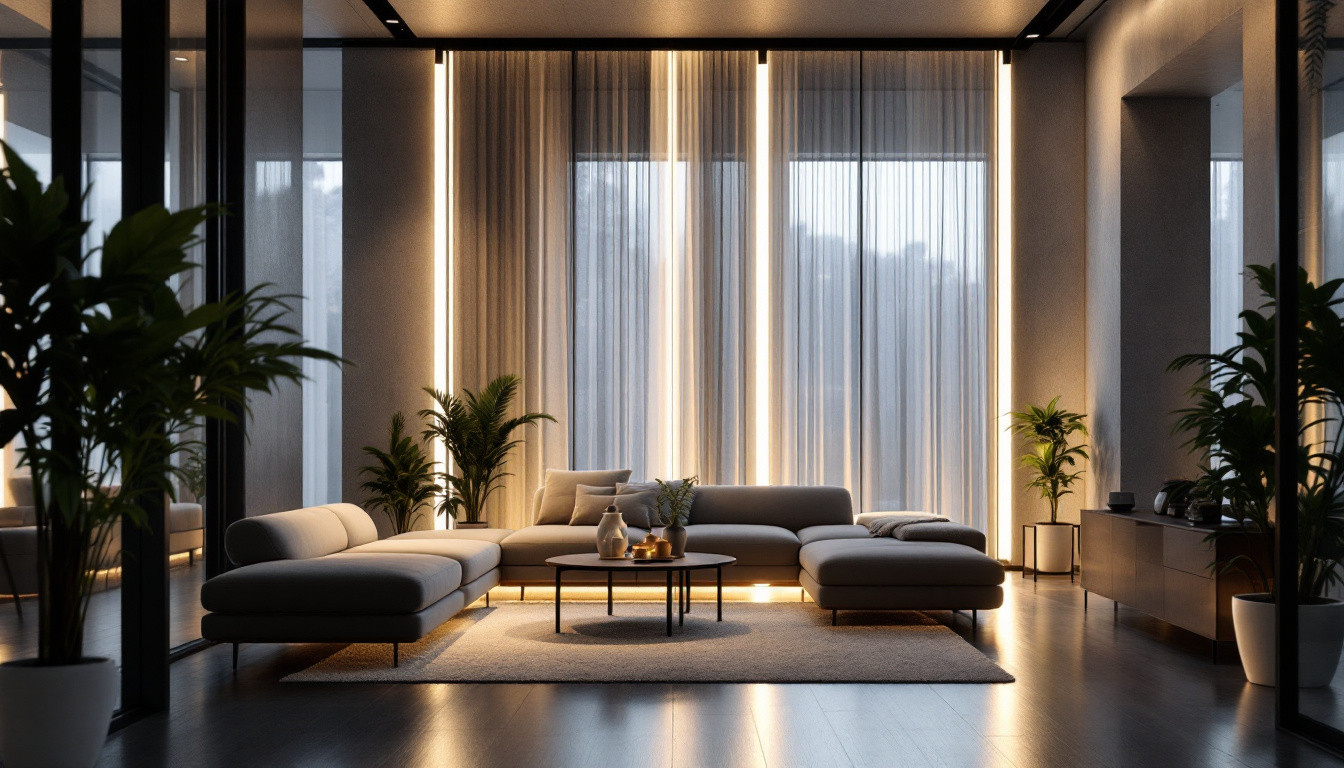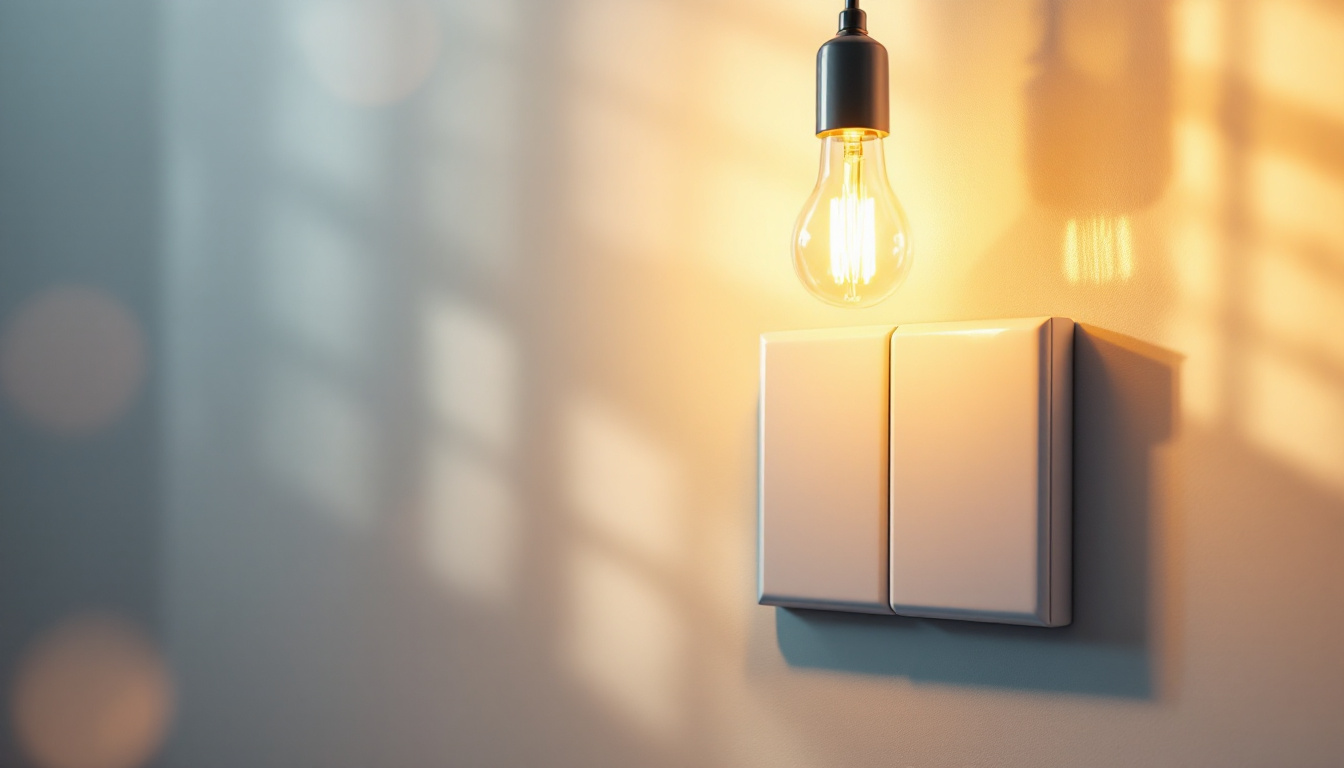
In the world of electrical installations, light switches are often taken for granted. However, they play a crucial role in the functionality and aesthetics of lighting systems. For lighting contractors, understanding the different types of light switches is essential not only for effective installation but also for providing clients with informed choices. This article explores various types of light switches, their applications, and key considerations for contractors.
Light switches can be categorized into several basic types, each serving a unique purpose. Familiarity with these types will help contractors recommend the best options for their clients’ needs.
Single-pole switches are the most common type used in residential applications. They control a single light fixture from one location, making them straightforward and easy to install. Typically, a single-pole switch has two terminals and a ground screw, allowing for a simple on/off function.
Contractors should ensure that these switches are installed in accessible locations, as they are often the primary means of controlling lighting in a room. When selecting single-pole switches, consider the quality of the materials and the design, as these factors can affect durability and user experience. Additionally, the aesthetic appeal of the switch can complement the overall decor of a space, with options available in various colors and finishes to match different interior styles.
Three-way switches are essential for controlling a single light fixture from two different locations, making them ideal for hallways, staircases, and large rooms. These switches require two switches and a special wiring configuration that can be more complex than single-pole installations.
When working with three-way switches, contractors should pay close attention to the wiring diagrams to ensure proper installation. Additionally, educating clients about the functionality of three-way switches can enhance their satisfaction with the lighting setup. For instance, clients may appreciate the convenience of being able to turn off the lights from either end of a long hallway, which not only adds to the comfort of their living space but also increases safety by reducing the risk of accidents in poorly lit areas.
Four-way switches are used in conjunction with three-way switches to control a light fixture from three or more locations. This type of switch is particularly useful in larger spaces where multiple entry points exist, such as long hallways or expansive living areas.
Installing four-way switches requires careful planning and knowledge of electrical systems, as they add complexity to the wiring. Contractors should be prepared to explain the benefits of four-way switches to clients, particularly in terms of convenience and functionality. Furthermore, incorporating four-way switches can significantly enhance the usability of a space, allowing for seamless control over lighting from various points, which is especially beneficial during gatherings or family events when people may be moving around frequently. Understanding the layout of the home and the specific needs of the occupants can help in determining the best placement for these switches, ensuring that they provide maximum benefit and ease of use.
Beyond the basic types, there are several advanced light switches that offer enhanced features and capabilities. These options can significantly improve the user experience and energy efficiency of lighting systems.
Dimmers allow users to adjust the brightness of their lights, providing flexibility for different moods and activities. They can be installed in place of standard single-pole or three-way switches, making them a versatile option for many applications.
When recommending dimmers, contractors should consider the type of light bulbs being used, as not all dimmers are compatible with every bulb type. Additionally, educating clients on the benefits of dimming, such as energy savings and extended bulb life, can help justify the investment. For instance, using dimmers with LED bulbs can lead to significant energy savings, as they allow for lower wattage settings without compromising on light quality. Furthermore, dimmers can enhance the ambiance of a space, making them ideal for entertaining or creating a cozy atmosphere during movie nights.
Smart switches are becoming increasingly popular as more homeowners seek to integrate technology into their lighting systems. These switches can be controlled remotely via smartphones or voice-activated devices, offering convenience and automation.
Contractors should stay informed about the various smart switch options available, including compatibility with different smart home systems. Providing clients with a demonstration of how smart switches work can enhance their understanding and interest in these modern solutions. Moreover, many smart switches come with features like scheduling and energy monitoring, allowing users to set lights to turn on or off at specific times or track their energy usage over time. This not only adds convenience but also empowers homeowners to make informed decisions about their energy consumption, further promoting sustainability in their living spaces.
Motion sensor switches automatically turn lights on or off based on movement, making them ideal for areas like bathrooms, hallways, and garages. They enhance convenience and can contribute to energy savings by ensuring lights are only on when needed.
When installing motion sensors, contractors should consider the placement and sensitivity settings to avoid false triggers. Educating clients on the benefits of motion sensors, including safety and energy efficiency, can help them appreciate this technology. Additionally, some advanced motion sensors are equipped with ambient light sensors, which can further optimize energy usage by only activating lights when natural light levels are insufficient. This dual functionality not only enhances the user experience but also aligns with eco-friendly practices, making homes more sustainable while ensuring safety and comfort for all occupants.
In addition to standard and advanced switches, specialty light switches cater to unique needs and preferences. Understanding these options can help contractors provide tailored solutions for their clients.
Toggle switches are characterized by their lever mechanism, which users flip up or down to control the light. They are available in various styles and colors, allowing for customization to match the decor of a room.
Contractors should consider the aesthetic preferences of their clients when recommending toggle switches. Offering a selection of designs can help clients find the perfect match for their lighting scheme.
Rocker switches feature a flat surface that users press to turn lights on or off. They are often seen in modern homes due to their sleek design and ease of use. Rocker switches can be single-pole, three-way, or even dimmers, providing versatility in applications.
When installing rocker switches, ensure that they are mounted at a comfortable height for users. Additionally, contractors should discuss the various finishes available to help clients select a style that complements their interiors.
Push button switches offer a unique alternative to traditional toggle and rocker switches. Users press a button to control the light, which can add a modern touch to any space. These switches can also be designed for dimming or multi-function capabilities.
Contractors should evaluate the installation requirements for push button switches, as they may differ from more common switch types. Educating clients about the benefits and style options can enhance their overall satisfaction with their lighting choices.
When installing light switches, several factors should be taken into account to ensure a successful outcome. These considerations can help contractors avoid common pitfalls and enhance the overall quality of their work.
Adhering to local electrical codes and regulations is paramount when installing light switches. These codes dictate the appropriate wiring methods, switch placement, and safety measures to protect both the contractor and the client.
Contractors should stay updated on any changes to electrical codes to ensure compliance. This knowledge not only protects the contractor but also builds trust with clients who expect safe and reliable installations.
Understanding client preferences is crucial in selecting the right light switches. Factors such as style, functionality, and ease of use should be discussed during the initial consultation to ensure that the final installation meets their needs.
Contractors should be prepared to offer a range of options and educate clients on the benefits of each type. This approach fosters collaboration and helps clients feel more invested in the decision-making process.
As technology continues to evolve, it is essential for contractors to consider future-proofing their installations. This may involve recommending smart switches or wiring setups that accommodate future upgrades.
Discussing potential future needs with clients can help them understand the value of investing in more advanced options. This foresight can save both time and money in the long run, ensuring that lighting systems remain functional and relevant.
Understanding the various types of light switches is essential for lighting contractors looking to provide exceptional service. From basic single-pole switches to advanced smart technologies, each type offers unique benefits and applications. By staying informed about the latest trends and technologies, contractors can better serve their clients and enhance the overall quality of their installations.
Incorporating client preferences, adhering to electrical codes, and considering future needs are crucial steps in the installation process. By doing so, lighting contractors can ensure that their work not only meets but exceeds client expectations, leading to satisfied customers and successful projects.
Ultimately, the right light switch can make all the difference in a lighting installation, providing both functionality and style. By understanding the options available and the best practices for installation, lighting contractors can position themselves as trusted experts in their field.
Ready to elevate your lighting installations with the best switches on the market? Look no further than LumenWholesale, where we provide lighting contractors with superior, spec-grade lighting products at unbeatable wholesale prices. Our extensive selection is designed to meet the highest industry standards, ensuring you deliver reliable and high-performance lighting solutions for every project. Plus, with free shipping on bulk orders, you can stock up on premium lighting without the worry of hidden fees or compromises. Don’t miss out on quality, affordability, and convenience. Visit LumenWholesale today for Wholesale Lighting at the Best Value.

Discover how long LED lights are revolutionizing the lighting industry with their energy efficiency, longevity, and versatility.

Discover the essential guide for lighting contractors on industrial LED spotlights.

Discover the must-have yard light pole tools that every lighting contractor needs to enhance outdoor spaces.

Discover how to enhance your home’s lighting efficiency with strategic placement of light fixtures before a double switch.